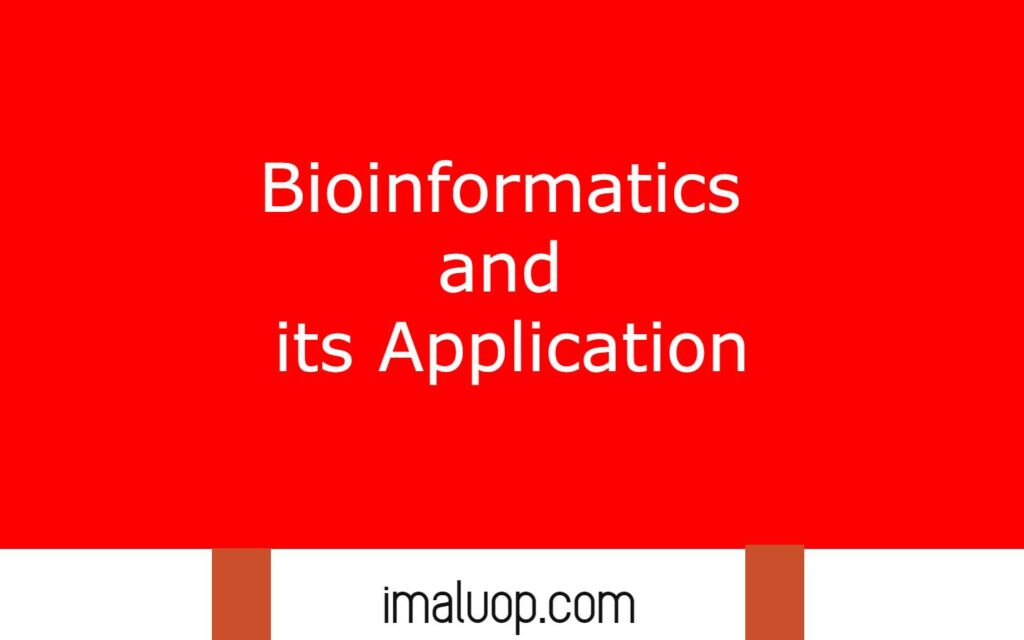Now we are going to discuss an interesting topic bioinformatics and its application where we will discuss how we use biological sciences and information technology together for human welfare.
What is Bioinformatics:
We use different sciences like mathematics, information technology, chemistry, biological sciences, computer science, and statistics to gather all knowledge about a special topic in living systems. In bioinformatics we study biology with the help of other sciences and merge them all together to analyse biological phenomena in broad aspects.
Analysis of different biological knowledge needs the help of other sciences like mathematics, statistics, computer science, chemistry so we merge those sciences and give rise to a new discipline which is known as bioinformatics.
In bioinformatics we gather all biological data and analyse them with the help of information technology and we develop different types of software by using biological tools. In broad meaning we collect, store, manipulate, classify, analyse different biological data with the help of information technology in bioinformatics.
First two scientists Paulien Hogeweg and Ben Hesper use the term bioinformatics for analysing and collecting biological data and their information analysis due to better improvement of applied biological sciences for the use of human welfare.
Application of Bioinformatics:
X ray crystallography was a great discovery which helps us to understand the three dimensional structure of any biomolecules which was not possible before the invention of x ray crystallography and it is very useful to produce different medicine.
Personalised medicine is a very advanced level of treatment where we do not depend only the traditional way of administration of medicine but here we treat each individual as its specific treatment but for this we have to know the genetic of the person and with help of bioinformatics we can determine the most suitable treatment for the person.
Gene therapy is something the only treatment for some serious genetic disorders but to utilise the gene therapy we need deep knowledge on different genes in humans so that we can identify the defective gene for a specific genetic disorder.
Using bioinformatics we can know the actual reason for a genetic disorder at the genetic level, then we can replace the defective gene with a proper correct gene and we can control the expression of a specific gene to cure a genetic disorder.
Different microorganisms are used in biotechnology for different purposes but the suitable application of any microorganisms is possible with the help of bioinformatics. In food processing we use different types of microorganisms.
If we know their genome with the help of bioinformatics then we can improve their capacity for quality food production. The knowledge we get from bioinformatics can be used in practice for engaging more microorganisms for better quality of food processing and we can find alternative sources of food.
In agriculture we can use bioinformatics for the production of high yielding crops because the knowledge of a crop’s genome is very important to know about their growing factors and the nutritional value of a crop is determined by its genome.
So if we analyse the genome of crop plants with the help of bioinformatics and improve the specific gene then we can produce high yield crops and also we can get high levels of nutrients in crops.

We use different microorganisms for controlling different crop pests by the help of bioinformatics in which we gather the genetic information of different microorganisms and their capabilities to control various pests.
For example Bacillus thuringiensis can control insect pests in cotton, potatoes and some other crops and it is possible due to the knowledge of genetic information which we get from bioinformatics.
Read More: Behavioural Genetics General Overview
Hi Everyone!!! Welcome to Imaluop. Imaluop always try to learn some new and he want to share to other people. Here we will try to learn various topics on Science, specially on Biological Sciences.
